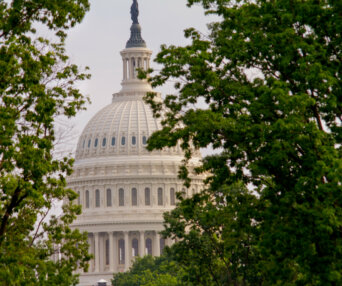- About
- Topics
- Picks
- Audio
- Story
- In-Depth
- Opinion
- News
- Donate
- Signup for our newsletterOur Editors' Best Picks.Send
Read, Debate: Engage.
| topic: | Climate Change |
|---|---|
| editor: | Yair Oded |
Following a week-long drama, US President Donald Trump has finally signed the second coronavirus stimulus bill on Monday, 28 December.
While the majority of public discussions concerning the bill centered around the $600 checks that are scheduled to be sent out to US citizens and eligible residents over the next two months, the legislation introduces a series of other relief measures, including several significant environmental provisions.
Included in the $900 billion stimulus package is a law restricting the emission of Hydrofluorocarbons (HFCs) a highly polluting chemical used as a coolant.
First introduced in the 1980’s as an alternative to Ozone-damaging refrigerants, HFCs have since been widely used in air conditioners and refrigerators (among other products). And although HFCs did halt the decimation of the ozone layer, it was subsequently discovered that they are potentially hundreds to thousands of times more potent than CO2 in contributing to climate change and that they can remain in the atmosphere for 15 years upon emission.
In a steadily-warming world, reliance on air conditioning has been dramatically rising, which in turn has made Hydrofluorocarbons a significant contributor to the climate crisis.
The new law would require the US government to follow the stipulations of the 2016 Kigali agreement, which obliges companies to cut HFC emissions drastically by 2035. The law aims to cut HFC production and import by about 85 per cent within the next 15 years, and thus potentially avoid a global temperature rise of nearly one degree Fahrenheit. The law mandates the Environmental Protection Agency (EPA) to implement the provisions.
The stimulus package also prescribes a reallocation of $35 billion in federal funds towards development of and research into clean energy sources. This includes over $4 billion in investments in solar, wind, hydropower, and nuclear energy, $450 million in CO2 removal technology, and hefty tax credits for renewable and carbon capture technologies.
News of the law’s inclusion in the stimulus package has elated environmentalists and manufacturers alike, as the latter have been pushing for the US government to ratify the Kigali agreement in order to give them an edge over companies relying on HFCs.
According to Senator Tom Carper of Delaware, the new law could create over 150,000 jobs and increase American manufacturing by $39 billion over seven years, The Verge reports.
Many experts have regarded the bi-partisan support for the bill as a sign that the tide is turning on the issue of climate change among conservatives. “Voters want action on climate, and even some Republicans want action on climate, and the Republicans leading on this HFC deal are starting to understand that,” Matthew Davis, legislative director for the League of Conservation Voters, told the New York Times.
But while tackling the climate crisis is regarded as a top priority by a growing number of Americans, the issue nonetheless remains a divisive point of contention in the nation, with the majority of conservatives and Republican lawmakers vehemently opposed to ambitious environmental legislation.
That said, the new law would nonetheless provide the incoming Biden administration with a significant leg up in embarking on its environmental agenda, and serve as a blueprint for future federal action on climate issues. It would also signal to the international community that after four years of Trump’s relentless attacks on the environment, the US could once again be counted on as a partner in the global fight against the climate crisis.
Image by Chantise Martin

